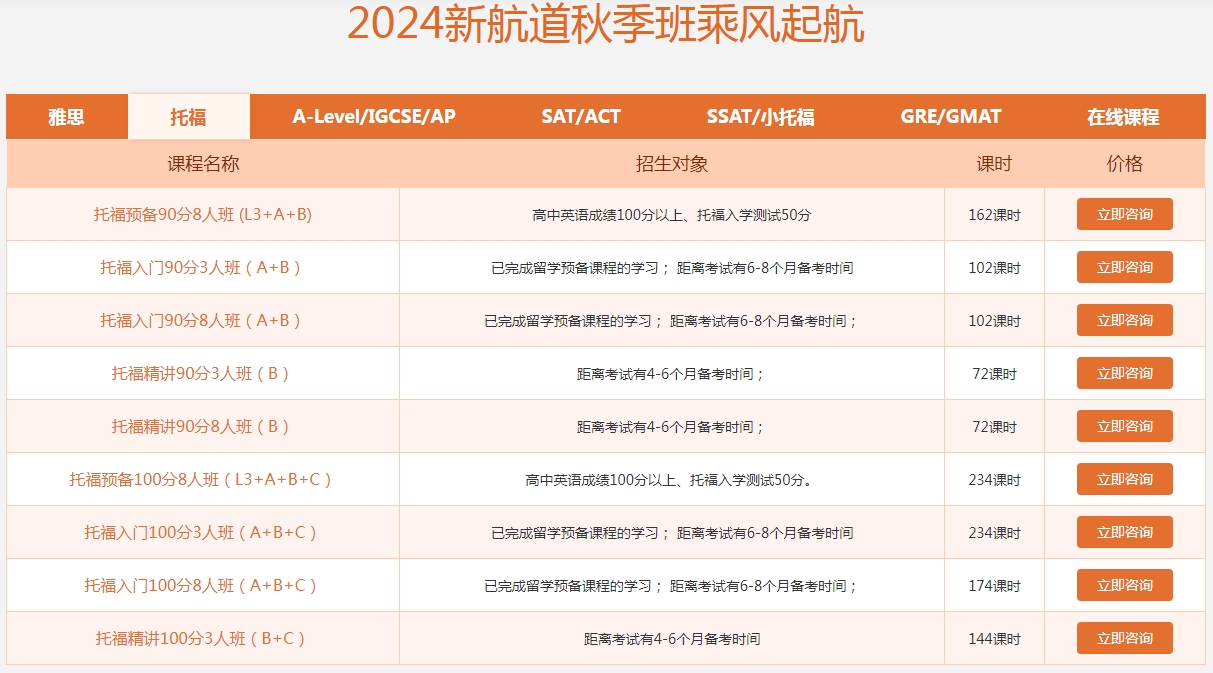作者: 2024-08-20 18:19:37 阅读量:
专业的天津托福秋季课程就选新航道托福秋季班,新航道托福秋季班课程涵盖多种班型,其中包括:基础班、精讲班,强化班,住宿班,线上班,上课时间灵活、严选师资授课。今天,新航道天津学校小编给大家带来的是新托福阅读背景知识之Early jazz,一起来学习一下吧。
托福阅读中,影响大家阅读速度的,其实还是对文章的理解,对于一些专业性比较强或者偏门的文章,会大大影响我们的速度和做题的时间的。因此在备考的过程中,大家可以多了解一些相关的背景知识,供大家参考。
Early jazz.
Fully developed jazz music probably originated in New Orleans at the beginning of the 1900's. New Orleans style jazz emerged from the city's own musical traditions of band music for black funeral processions and street parades. Today, this type of jazz is sometimes called classic jazz, traditional jazz, or Dixieland jazz. New Orleans was the musical home of the first notable players and composers of jazz, including contests Buddy Bolden and King Oliver, cornets and trumpeter Louis Armstrong, saxophonist and clarinetist Sidney Bechtel, and pianist Jelly Roll Morton.
Jazz soon spread from New Orleans to other parts of the country. Fate Marble led a New Orleans band that played on riverboats traveling up and down the Mississippi River. King Oliver migrated to Chicago, and Jelly Roll Morton performed throughout the United States. Five white musicians formed a band in New Orleans, played in Chicago, and traveled to New York City, calling them the Original Dixieland Jazz Band (the spelling was soon changed to "Jazz"). This group made the earliest jazz phonograph recordings in 1917. Mamie Smith recorded "Crazy Blues" in 1920, and recordings of ragtime, blues, and jazz of various kinds soon popularized the music to a large and eager public.
The 1920's
The 1920's have been called the golden age of jazz or the jazz age. Commercial radio stations, which first appeared in the 1920's, featured live performances by the growing number of jazz musicians. New Orleans; Memphis; St. Louis; Kansas City, Missouri; Chicago; Detroit; and New York City were all important centers of jazz.
A group of Midwest youths, many from Chicago's Austin High School, developed a type of improvisation and arrangement that became known as "Chicago style" jazz. These musicians included trumpeters Jimmy McFarland and Muggy Spinier; cornets Box Beiderbecke; clarinetists Frank Tastemaker, Pee Wee Russell, Mezzo, and Benny Goodman; saxophonists Frankie Rombauer and Bud Freeman; drummers Dave Tough, George Wetting, and Gene Krupp; and guitarist Eddie Condon. They played harmonically inventive music, and the technical ability of some of the players, especially Goodman, was at a higher level than that of many earlier performers.
专业的天津托福秋季课程就选新航道托福秋季班,新航道托福秋季班课程涵盖多种班型,其中包括:基础班、精讲班,强化班,住宿班,线上班,上课时间灵活、严选师资授课。
In New York City, James P. Johnson popularized a new musical style from ragtime called stride piano. In stride piano, the left hand plays alternating single notes and chords that move up and down the scale while the right hand plays solo melodies, accompanying rhythms, and interesting choral passages. Johnson strongly influenced other jazz pianists, notably Count Basie, Duke Ellington, Art Tatum, Fats Waller, and Teddy Wilson.
Fletcher Henderson was the first major figure in big band jazz. In 1923, he became the first leader to organize a jazz band into sections of brass, reed, and rhythm instruments. His arranger, Don Redman, was the first to master the technique of scoring music for big bands. Various Henderson bands of the 1920's and 1930's included such great jazz instrumentalists as Louis Armstrong and saxophonists Benny Carter and Coleman Hawkins.
Armstrong made some of his most famous recordings with his own Hot Five and Hot Seven combos from 1925 to 1928. These recordings rank among the masterpieces of jazz, along with his duo recordings of the same period with pianist Earl "Fatah" Hines. Armstrong also became the first well-known male jazz singer, and popularized scat singing-that is, wordless syllables sung in an instrumental manner.
During the late 1920's and early 1930's, jazz advanced from relatively simple music played by performers who often could not read music to a more complex and sophisticated form. Among the musicians who brought about this change were saxophonists Benny Carter, Coleman Hawkins, and Johnny Hodges; the team of violinist Joe Venetia and guitarist Eddie Lang; and pianist Art Tatum. Many people consider Tatum the most inspired and technically gifted improviser in jazz history.
The swing era flourished from the mid-1930's to the mid-1940. In 1932, Duke Ellington recorded his composition "It Don't Mean a Thing If It Isn’t Got That Swing." "Swing" was soon adopted as the name of the newest style of jazz. Swing emphasizes four beats to the bar. Big bands dominated the swing era, especially those of Count Basie, Benny Goodman, and Duke Ellington.
Benny Goodman became known as the "King of Swing." Starting in 1934, Goodman's bands and combos brought swing to nationwide audiences through ballroom performances, recordings, and radio broadcasts. Goodman was the first white bandleader to feature black and white musicians playing together in public performances. In 1936, he introduced two great black soloists-pianist Teddy Wilson and vibraphonist Lionel Hampton. Until then, racial segregation had held back the progress of jazz and of black musicians in particular. In 1938, Goodman and his band, and several guest musicians, performed a famous concert at Carnegie Hall in New York City. Their performance was one of the first by jazz musicians in a concert hall setting.
Other major bands of the swing era included those led by Benny Carter, Bob Crosby, Jimmy Dorsey, Tommy Dorsey, Woody Herman, Earl Hines, Andy Kirk, Jimmie Lunsford, Glenn Miller, Artie Shaw, Chick Webb, and, toward the end of the period, Stan Kenton. The bands in Kansas City, Missouri, especially the Count Basie band, had a distinctive swing style. These bands relied on the 12-bar blues form and riff backgrounds, which consisted of repeated simple melodies. They depended less heavily on written arrangements, allowing more leeway for rhythmic drive and for extended solo improvisations.
以上就是为大家整理的“新托福阅读背景知识:Early jazz”,专业的天津托福秋季课程就选新航道托福秋季班,新航道托福秋季班课程涵盖多种班型,其中包括:基础班、精讲班,强化班,住宿班,线上班,上课时间灵活、严选师资授课。
新航道天津学校为您提供......
新航道天津学校-作为19年的雅思|托福|sat培训辅导机构,为您提供雅思培训课程、托福培训课程、sat培训课程,雅思、托福、sat报考、考试、备考资料、查分等信息。同时还为您提供雅思考试流程,雅思培训服务,并提供雅思备考专区;更多的雅思口语、雅思听力、雅思写作、雅思词汇、雅思阅读、天津雅思培训相关信息为您提供,圆你出国留学梦想。
新航道为学生提供
雅思、托福、A-Level、AP等各类出国考试培训
留学咨询、考英语培训服务
秋季班课程涵盖多种班型
设线下走读/在线课程/全封闭模式
大班/小班/1V1定制班等多种班型
上课时间灵活、严选师资授课
总有一款适合你

精品班试听课+免费测评+学习方案制定